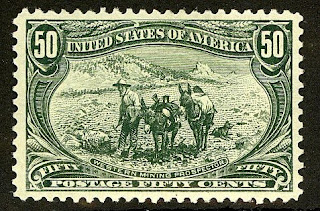

Be thankful that one of the U.S. Navy's late-1950s solutions to the problem of slow mail delivery never caught on because, if it had, you could be ducking unarmed cruise missiles right now. On June 8, 1959, the U.S. submarine Barbero conducted the first and last test of so-called "Missile Mail," a concept that involved using a warhead-less Regulus cruise missile to carry postal containers.
Clairvoyant, Summerfield was not. Considering the absurdity of using cruise missiles for civilian purposes during the Cold War, to say nothing of the inherent danger of firing weapons over civilian locations at regular intervals, or the high probability that the four-cent (domestic) and eight-cent (international) stamps on the rocket-powered postage didn't exactly cover the cost of using high-priced ordnance to pick up the delivery pace, it should come as no surprise that Missile Mail was a one-time-only affair.















































